If you spend time on a golf course, you’ve probably heard professional golfers talk about how desirable draw shots are, and maybe you’ve wondered, “What is a draw in golf?” Because of this shot’s ease of control and consistency, it’s easy to see why it’s one of the most popular among golfers.
However, if you’re still new to golf and still practicing your club path, you must first exert time and effort to learn what a draw in golf is.
Being equipped with this information will make it easier to practice this technique and use it to win your next golf game.
Read on to know the nature of draws, tips to hit one, and the difference between fade shots.
Let’s get started!
Definition and Advantages of Draw Shots in Golf
A draw is a type of golf shot that gives golfers increased accuracy, control, and distance when repeated constantly. This golf shot happens when the golf ball’s trajectory forms a curving arc –– starting outside the target line and curving back toward your intended target.

If you’re a right-handed golfer, a draw starts right off the target and curves back to the left. Alternatively, the draw shot starts left, and the ball curves right to the target for left-handed golfers.
A consistent draw offers golfers many advantages, such as:
- Increase Control: You can better judge where to aim and where the golf ball will land.
- Better accuracy: If you have better control over when your ball goes, your accuracy in the golf game also increases.
- Increase Distance: A draw also gives golfers more distance over a straight shot. This happens as the topspin bias propels the ball forward, often at a lower trajectory, and rolls out further when it lands.
Benefits of Draws in Golf
Even though draws offer you many advantages, keep in mind that consistently playing a draw will make you susceptible to losing control of the shot’s curving arc hook. A hook is a sharply curving ball that bends past the intended target.
Nevertheless, knowing how and when to strike a golf shot will bring the following benefits.
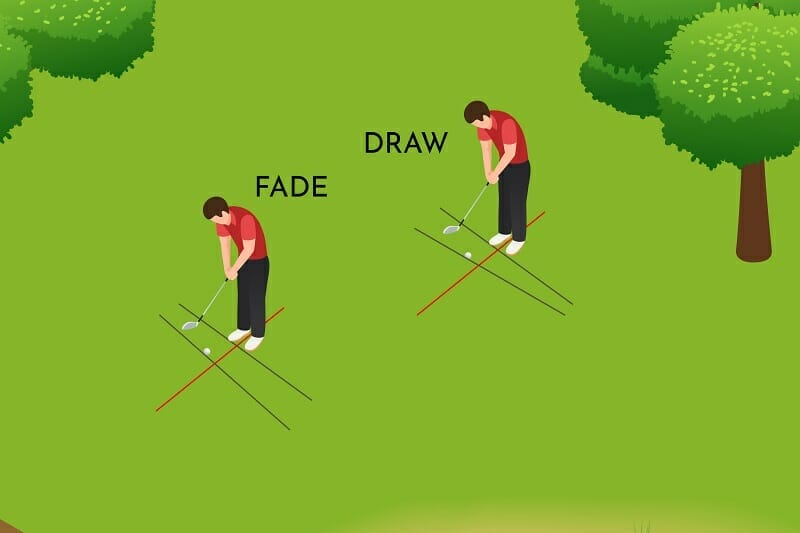
Better Fairway Position
Most golfers hit a draw shot for tee shots on right-to-left dogleg holes. This is because being able to shape the ball with the layout of the holes makes it easier for you to achieve a prime position on the fairway.
Failure to hit a draw shot will result in relying on a straight shot and targeting the right side of the fairway. This process requires precision to ensure that the ball doesn’t bounce off the fairway and land into the right rough.
Conversely, taking a draw shot when the ball is in the middle of the fairway allows you to quickly attack the flag on approach.
When Should You Hit a Draw?
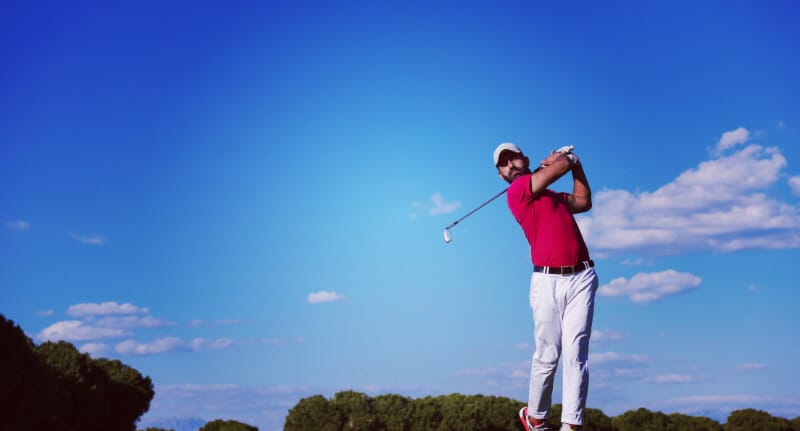
Golfers usually hit a draw when obstacles are present in the direct line. Unfortunately, right-handed golfers will need enough room to the right of the target to start the ball.
Hitting a draw helps right-handed golfers curve the ball around the obstacle so they can lead it closer to the target line. Otherwise, golfers would need to chip out and risk a bogey.
Ensures Lower Ball Fight
Hitting a draw requires a closed clubface at impact, so the ball will sit back in your stance. The back-ball positioning and closed club face combination results in a delofted strike. This motion causes a lower launch and piercing ball flight.
A lower trajectory removes the breeze from the picture when playing in windy conditions, making it easier for you to hit your shots accurately.
Tips for Hitting a Draw in Golf
With consistent practice, it won’t be long before you can master the perfect draw and use it as your go-to shot.
If you’re new to golf or want a refresher, consider these tips whenever you want to hit a draw shot.
Aim Right of Your Target
If you’re a right-handed golfer, you should aim your feet to the right of the target.
Remember, always limit how far right you’re going to aim. This is crucial because pointing further right will require you to curve the golf ball more near the target.
Aim to the right of your target to compensate for the draw curve on your golf ball. Doing so gives you sufficient space to shape the ball back to the mark after starting from the right.
Pay Attention to Your Stance
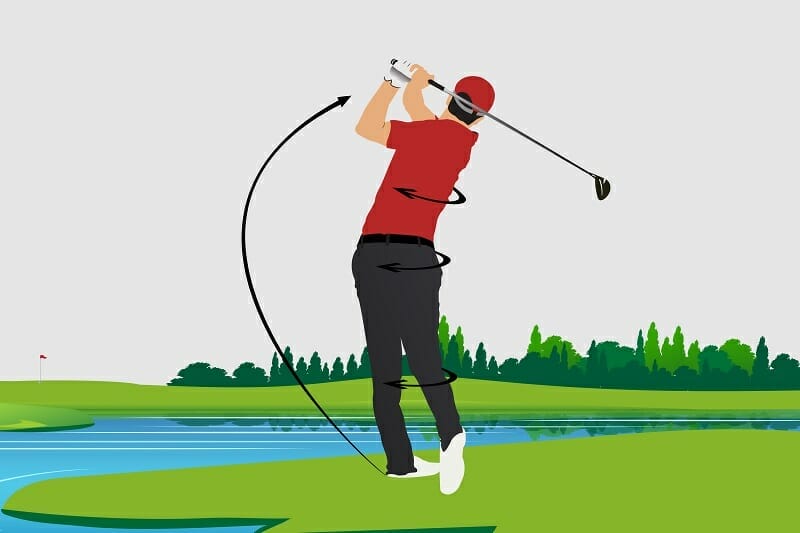
To make it easier for you to strike the golf ball with a steep attack angle and less loft, place the ionomer back in your stand.
Additionally, striking the ball from this position allows you to maintain a closed clubface appropriate to your swing path.
With this, you can aim the ball to the right of your target and draw it back in.
Learn How to Forward Press
A forward press involves putting your hands ahead of the ball and strengthening the golf club’s loft.
This motion increases your odds of taking low-launching shots and reduces spin rates, improving the distance of your shots significantly.
Master Outside Downswings and Inside Backswings
This is the most important part of developing a draw ball flight. Start by taking the club head along the inside path on the backswing. You won’t have any problems producing an outwards downswing from this position.
After taking the club on your backswing, you can conveniently send the ball on an outside path. This enables you to keep a closed clubface relative to your club path. It also launches the ball right at the target before returning to the intended landing zone.
Maintain a Closed Clubface At Impact
A closed club face means something other than being close to your target. In fact, being close to your target will only cause you to start your ball left of your mark and draw it further to the left.
Instead, maintain a closed club face relative to your swing path. This angle prepares you to produce the necessary side spin, sending the golf ball back to the left side after starting to the right.
Draw vs. Fade: Understanding the Difference
Many golfers, particularly beginners, are confused between draw and fade shots. Some even believe that the two are the same. However, this isn’t true.
To help you out, these are a few differences between a golf shot and a fade shot.
Alignment
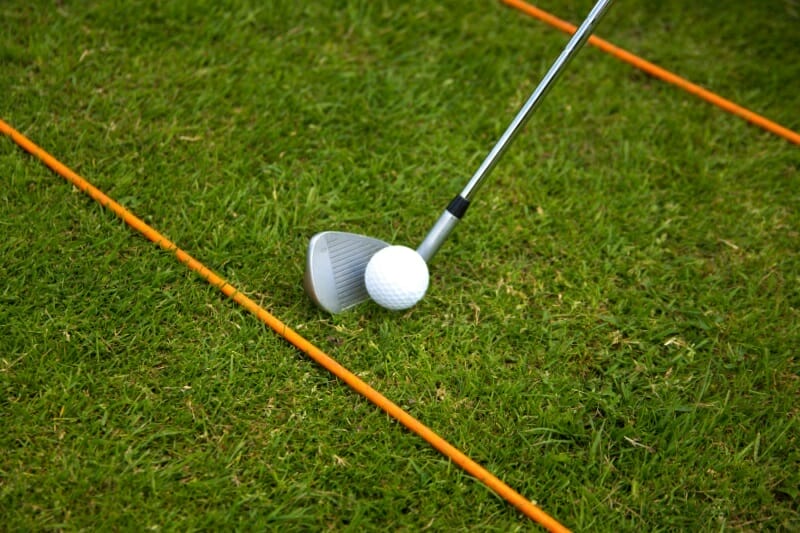
Hitting a draw shot and a fade shot requires different alignments, which depend on your dominant hand.
- Right-handed golfers: Your feet should aim to the left portion of your market. Doing so compensates for the face angle at impact and prompts the ball to curve from left to right.
- Left-handed golfers: The feet should be at the right of your target, and prepare for the left turn.
Hitting a draw is different. Both feet should point to the right of your landing zone if you’re a right-handed golfer. This gives the ball enough room to draw back to the pin.
Ball Position
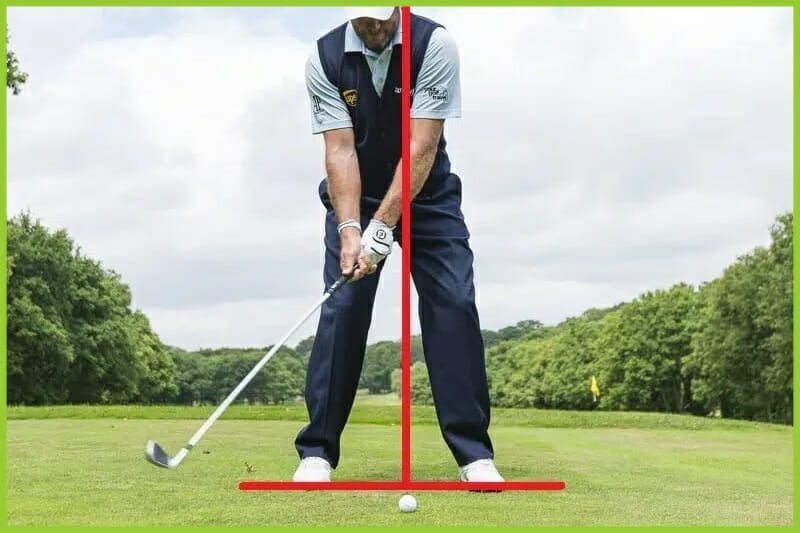
You need to place the ball forward in your stance to hit fade shots. On the other hand, to hit a draw requires moving the ball back.
The forward ball position enables you to swing along the line of your body while aiming to the left of your target. As a result, the clubface remains open to your club path and square to the mark, causing the golf ball to shape from left to right while in the air.
Club Path
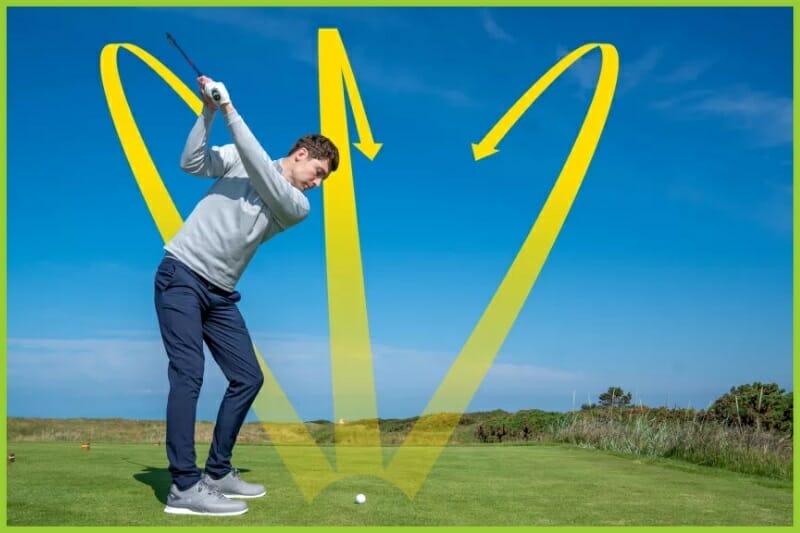
Your club path affects how the clubface strikes the golf ball. This is crucial because it impacts the direction of the sidespin you create for your shot.
If you want to hit a draw, make sure to follow an inside-out golf swing –– club heads should follow an inside line on takeaway, so it’ll flow on an outswing path down to the ball. This will allow you to begin the shot right of your target to account for the left arc.
On the other hand, a fade requires an outside-in path to guide your clubface to send the golf ball to the right of the target line before it fades back on the intended route.
Clubface at Impact
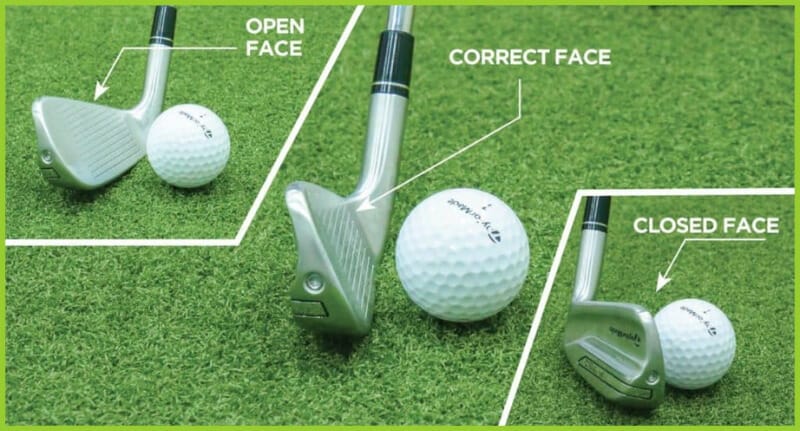
If you position your clubface wrong at impact, you won’t be able to execute the golf shot you want.
Setting up a draw means aiming to the right of your target and striking your ball with a square clubface relative to your swing path. Doing so will allow the golf ball to travel directly to the right of your target line with no draw.
As a solution, maintain an open club face relative to your swing path at impact to generate a fade.
Conversely, your clubface should stay close to your swing path to prepare a draw.
Draw vs. Fade: What’s Better?
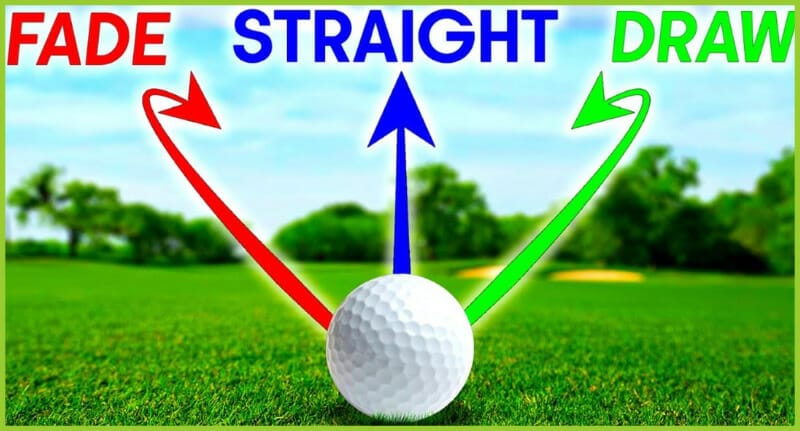
The ability to hit a draw and fade with your golf club increases your options when on the golf course.
These golf shots are equally important, so it’s crucial to learn how to execute and master them both.
Takeaway: Is Hitting a Draw Good in Golf?
So, what is a draw in golf? Hitting this show is one of the signs that the golfer has significant ability and skill.
In other words, golfers who can consistently hit a draw have better experience in control, accuracy, and distance. These factors help lower scores and increase the enjoyment of golf.

